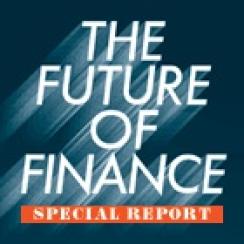
“We started looking at the world from a return-on-risk point of view, asking what pieces were missing from our asset mix,” he says of his time at Ontario.
AIMCo oversees about $70 billion in assets for 26 pension, endowment and government funds, including the Alberta Heritage Savings Trust Fund, the sovereign wealth fund created from the province’s oil and gas revenue. De Bever, a native of the Netherlands, has spent the bulk of his career in Canada. After earning a Ph.D. in economics from the University of Wisconsin in 1976, he worked as chief forecaster at the Bank of Canada. In 1980 he went to Chase Econometrics Canada as chief economist. He took a similar position at Crown Life Insurance Co. in 1986. From 1991 to 1994 he worked at Nomura Securities Canada as chief economist and bond strategist. In 2006, following his tenure at Ontario Teachers and two years heading Manulife Financial Corp.’s insurance portfolio, he moved to Melbourne, Australia, to become CIO of Victorian Funds Management Corp. There he saw the difficulties in unhooking a fund from government control firsthand. He left for AIMCo after two years.
De Bever has built AIMCo to take advantage of the greater control and clout that come with direct investing. Drawing on his deep knowledge of the subtleties of risk, de Bever has implemented systems that encourage managers of both public and private assets to look purely at return on risk when selecting investments. He is passionate about wanting to avoid missing opportunities because an investment doesn’t fit neatly into a category like infrastructure or private equity.
“We’re finding that we’re looking at opportunities that in a pure private equity framework wouldn’t be deemed worthwhile but from a risk-reward point of view are,” he says. De Bever calls this “investing between the cracks” and says plans that hire external funds miss such opportunities.
AIMCo, which has grown from 150 to 300 people since de Bever arrived, has whittled down the number of managers it uses. It’s gone from having relationships with about 85 external equity managers to about 12. One of the problems with using so many funds, beyond managing the relationships, was the overdiversification and flattening out of returns that come from holding too many positions. “They became indexlike,” de Bever adds. AIMCo has cut its fees by $75 million in equities simply by reducing the number of outside managers.
“When I do a job that is external to the organization now, it costs me four to five times what it costs me to do it internally,” he says. “When an external manager sets up shop, they have the costs of capital, marketing and talent. I only have that last piece.”
AIMCo has cut the number of external managers in private equity from 50 to about 15. De Bever is focusing on working with “people who we feel a commonality with us in terms of how we invest,” he explains. Many private equity firms, for example, allow AIMCo to co-invest alongside them. “That’s important for them because they want to have a reliable source of capital to implement a project,” de Bever says.
The direct model, however, is not all about investing; it’s also about the more prosaic systems and operational infrastructure that need to be put in place to make it work. AIMCo has a project under way to make all of its systems best of breed when it comes to risk, portfolio management and operations. “Part of the advantage of an organization like ours is that you can manage your individual positions much more effectively,” de Bever explains. “But to make that theory work, you have to have good systems and you have to keep investing in those systems.”
AIMCo is organized into a public markets group and a private markets unit that includes timberland, infrastructure, real estate, private debt and relationship investing. The group uses funds where it can’t build capabilities cost-effectively. U.K. real estate is one example. When de Bever joined AIMCo, 70 percent of its assets were in funds, with 30 percent in co-investments. Now the assets are split pretty evenly between funds and direct investments. De Bever’s goal: to be 70 percent in direct investments.







